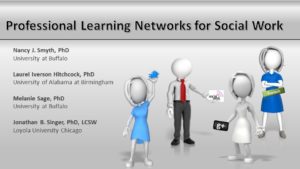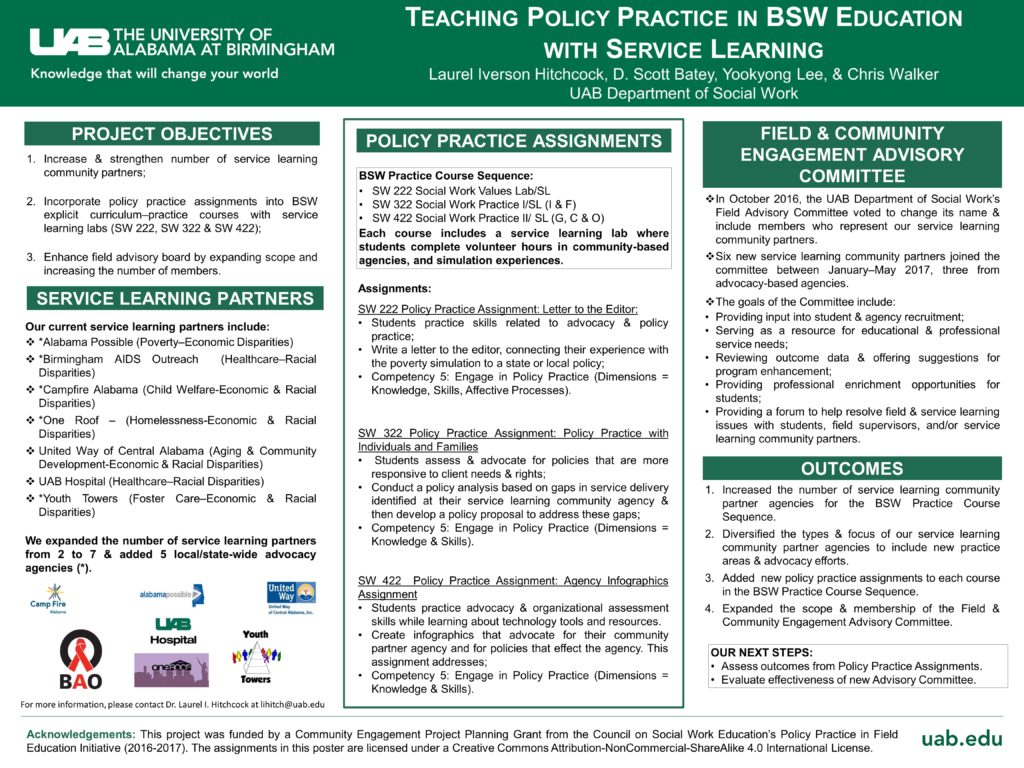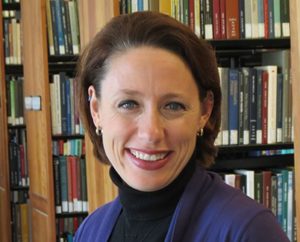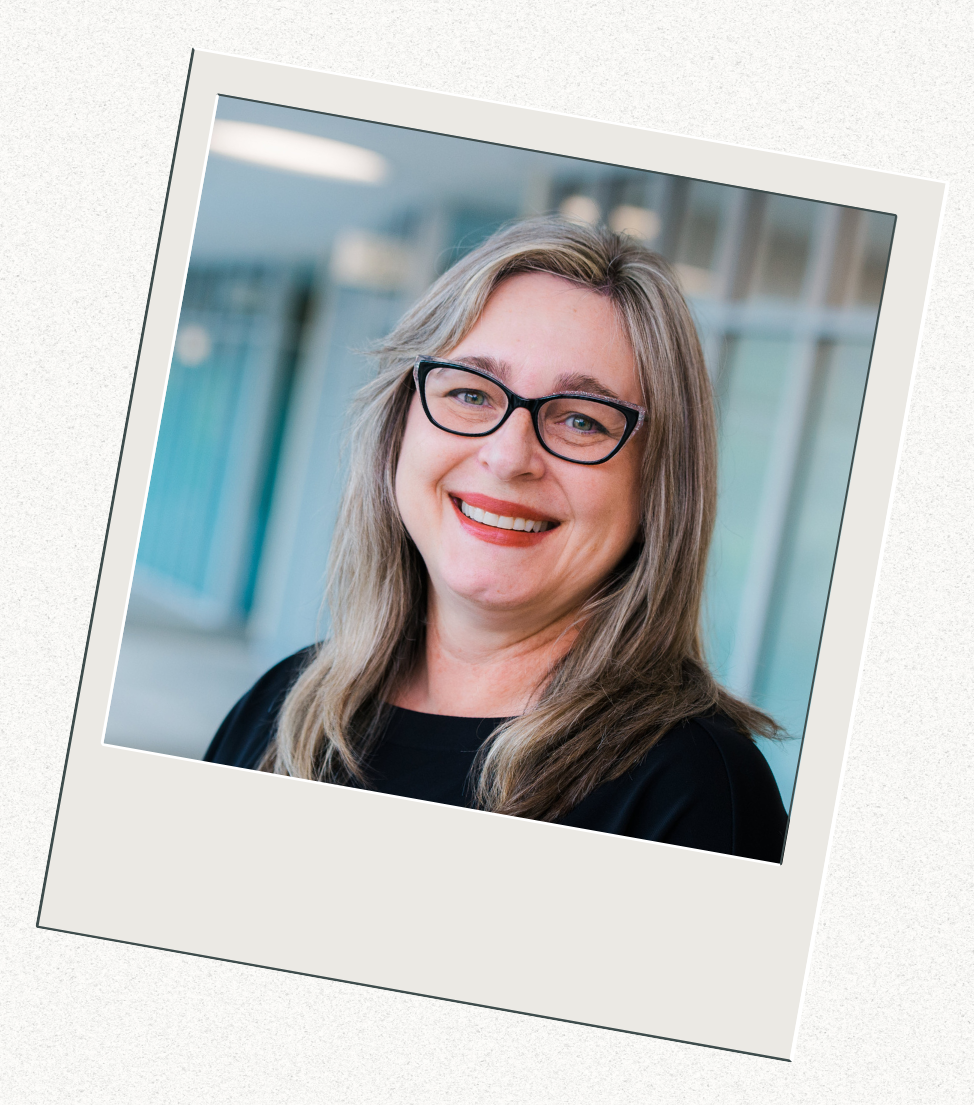#APM17 – Harnessing Technology for one’s own Good: Professional Learning Networks in Social Work
 On 10/22/17, the last day of CSWE’s 2017 Annual Program Meeting, at 10:00 AM in the Dallas Ballroom A-2, Nancy J. Smyth, Melanie Sage, Jonathan Singer, and I are presenting about how social work educators can use technology for career-long learning. Nancy, Melanie and I introduced the idea of professional learning networks (PLN) to a packed room at Social Work Distance Education Conference in April, and wanted to bring the practice to the #APM17 crowd. A PLN incorporates technology-based tools and processes in a way that allows individuals to stay up-to-date and share information about current news, practice knowledge and current research findings. We will be talking about the mechanics, advantages and disadvantages of establishing a PLN. One resources we will be sharing is our Professional Learning Network (PLN) Worksheet, which takes a social worker through the steps of creating their own PLN. You can get your own copy here: https://drive.google.com/file/d/0ByR_E-iQH7PdT2t1WV9YYnlZV00/view?usp=sharing
On 10/22/17, the last day of CSWE’s 2017 Annual Program Meeting, at 10:00 AM in the Dallas Ballroom A-2, Nancy J. Smyth, Melanie Sage, Jonathan Singer, and I are presenting about how social work educators can use technology for career-long learning. Nancy, Melanie and I introduced the idea of professional learning networks (PLN) to a packed room at Social Work Distance Education Conference in April, and wanted to bring the practice to the #APM17 crowd. A PLN incorporates technology-based tools and processes in a way that allows individuals to stay up-to-date and share information about current news, practice knowledge and current research findings. We will be talking about the mechanics, advantages and disadvantages of establishing a PLN. One resources we will be sharing is our Professional Learning Network (PLN) Worksheet, which takes a social worker through the steps of creating their own PLN. You can get your own copy here: https://drive.google.com/file/d/0ByR_E-iQH7PdT2t1WV9YYnlZV00/view?usp=sharing
You can access a copy of the presentation slides here: https://www.slideshare.net/laurelhitchcock/professional-learning-networks-for-social-work-81048022
Using Technology for Collaboration: Virtual Communities of Practice
This post was written and edited by Nancy J. Smyth, Melanie Sage, and myself as part of our collaboration on our forthcoming book, Teaching Social Work with Digital Technology, to be published by CSWE Press in 2018.
Virtual Communities of Practice (VCoP) are professional online communities that exist to improve work and education around disciplines and professions (Hara, Shachaf, & Stoerger, 2009; Adedoyin, 2016). In this blog post, we asked our colleagues (social work educators) to share their best tips for collaborating with others professionals using digital tools.
Christine McKenna Lok of Dean College in Franklin, MA, participates in a VCoP called Academic Writing Club:
They set you up with a group of a dozen faculty in the social sciences (or health sciences, or whatever) and you have a private community to set goals for each 12-week cycle, check off which dates you’ve accomplished your goals, and write messages to each other about the process of writing rather than the content. They also have chat sessions available at various times with the entire enrollment for that session so you can log in at, say, 8 AM Central and say hello to other folks who have committed to a half-hour of writing and then wish them well at the end of the time. It’s not free, but it’s a worthwhile investment (C. McKenna Lok, personal communication, September 11, 2017).
#APM17 Day 1 – Infusing Policy Practice into BSW Service Learning Courses
As part of the Field Education Institute, I am presenting a poster with my colleagues Scott Batey, Yookyong Lee, and Chris Walker (University of Alabama at Birmingham) about the work we did for our Policy Practice in Field Education Initiative Grant from the Council on Social Work Education.
Our project involved creating more policy-based learning opportunities into our undergraduate service learning courses, creating a series of policy-focused activities that are grounded in community-based settings. Our curriculum includes three practice courses with a one-hour service-learning lab. Students take the courses sequentially and complete 32 hours in service learning at a community-based agency or simulation for each lab. By integrating policy-focused learning activities into these service-learning labs, we hope to bridge the gap between our policy courses and field education while simultaneously providing all of our students the opportunity to see how policy affects communities and agencies in our state, especially related to issues of economic and racial disparities. Our specific objectives for this planning grant included: 1) Incorporate at least one policy-based assignment or learning opportunity into each of the service learning labs in our practice sequence; 2) increase and strengthen the number of service learning community partners with local and state-wide advocacy agencies focused on addressing issues of economic and racial disparities; and 3) Enhance our field advisory board by increasing membership to include community partners from our service learning projects, especially partners from policy-based agencies.
Here is a copy of our poster:
The Flipped Classroom: Harnessing technology to teach clinical skills to MSW students
Dr. Elisabeth Counselman-Carpenter, PhD, LCSW is a lecturer in social work at Columbia University and maintains a private practice where she works with children and families. In this blog post, she talks about the reasons why she flipped her course on clinical practice with children & families and the practical steps she took to achieve the flip. If you have questions for Elisabeth, you can tweet her at @ElisabethAnneCC .
This course was designed as first semester, second year elective called “Advanced Clinical Practice with Children and Families”. Built on previous content from other courses about life span model and ecosystems perspective, students are expected to leave this advanced clinical course understanding the context and application of evidence-based social work practice with vulnerable populations.
After teaching the course for a year using traditional lecture format, I surveyed students regarding their learning preferences as well as goals and objectives for the semester. Some of the questions I asked included:
– What are your personal goals and expectations from this class for the next 14 weeks?
– What would strengthen your experience in this class?
– What have been some of your key take-aways from other practice classes?
Feedback indicated that students were most interested in focusing on play therapy and other forms of evidenced-based practice with skills be directly taught in class (i.e. modeled and then time for practice in the classroom). Uniformly, students reported that they felt unskilled in putting into place any form of direct practice with children because they only had a surface grasp of “how” to use certain skills with children. All students requested that the course focus on direct application, with a ‘walk-through’ of the skills and interventions, by the professor, covered in the course readings and lectures. Additionally, students felt unsure about where to gather accurate information on how to implement their skills, and reported they were not often given time in field to observe and practice these skills with other staff members. They requested digital case examples, such as training videos, in addition to single case study research articles to enhance their knowledge. This course had rich material in the texts, but students struggled with the “how to” and were bored by simply reading about the techniques.
Using Technology for Productivity: Managing the Academic Workload
This post was written and edited by Nancy J. Smyth, Melanie Sage, and myself as part of our collaboration on our forthcoming book, Teaching Social Work with Digital Technology, to be published by CSWE Press in 2018.
Today’s academic work environments are fast-paced and rely on digital technologies to handle the flow of communication and information such as email, digital calendars, and electronic to-do lists. In this blog post, we asked social work educators and practitioners to share their best tips for using technology as a tool for productivity.
Managing email can be a difficult and time-consuming task. Andy Berkhout, the Data Quality Coordinator from the St. Patrick Center in St. Louis, MO shares his guidelines for managing email:
Clients and colleagues will notice if you are paying more attention to checking email on your phone than you are to them. Instead, set a dedicated time at the beginning or end of the workday to catch up on electronic communication. When it is time to pay attention to the person in front of you, do just that; put your phone away and give your complete focus. Your text messages and email will be still be there later, but the chance to connect with a client or provide meaningful input during a meeting might pass if you’re not giving the present moment your full attention (A. Berkhout, personal communication, September 6, 2017).
Shelly Richardson, an Assistant Professor and Director of Undergraduate Social Work at The College of St. Scholastica in Duluth, MN, uses her prior practice experience to cope with her email:
In my role as an associate professor and director of an undergraduate program, I only check emails twice a day and spend no more than 45 minutes doing so. This forces me to prioritize activities and responses quickly. I only “touch” things once. If I need to take care of something or respond, I do it immediately upon receiving the request. I also have files with names of my frequent contacts (such as co-workers, dean, chair) emails that are initiated by those individuals are easier to find. I also use folder titles for activities I am responsible for (advising, to be graded, coordinating, and committees). These folders allow me to clean up my inbox as I read through emails, I flag emails that are in progress or I need to follow up on and review the flags once a week (usually Monday or Friday). These flagged items stay in my inbox and I work to keep this number around 15-. I also have a rule, if I have to respond more than twice, I make a phone call immediately or schedule a face to face to follow up, this is usually indication that communication has broken down somewhere and needs to be resolved (S. Richardson, personal communication, September 20, 2017).




